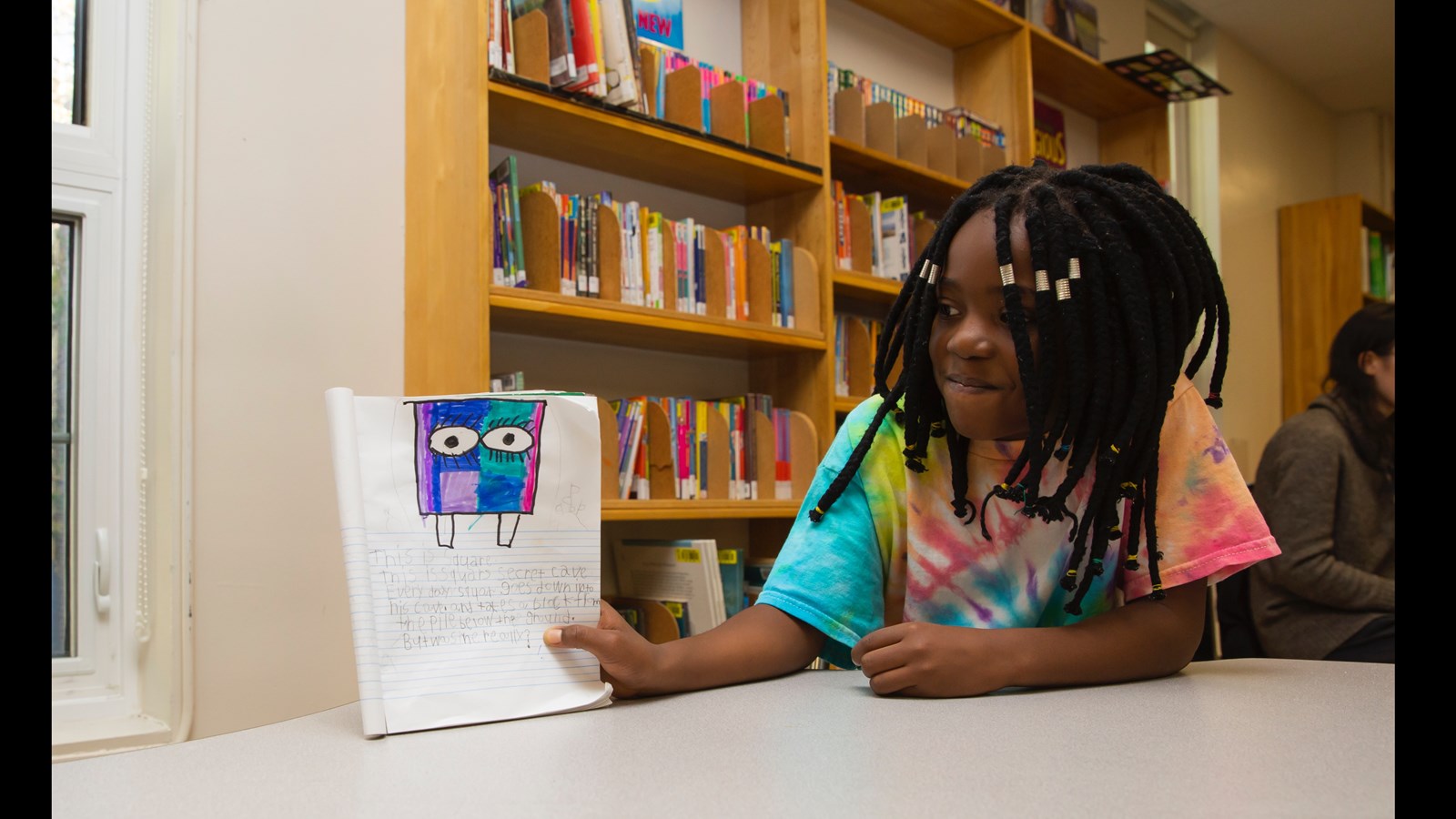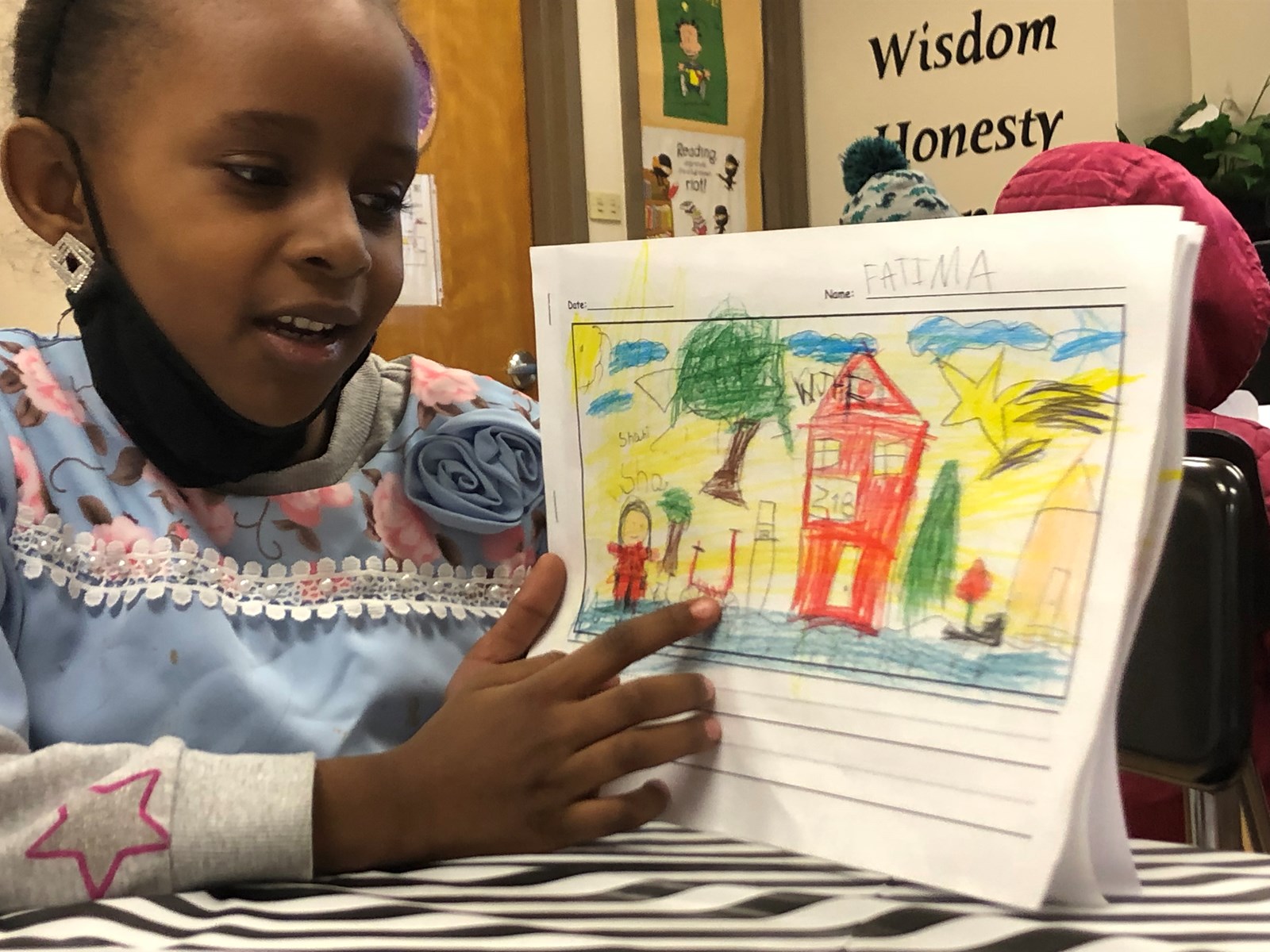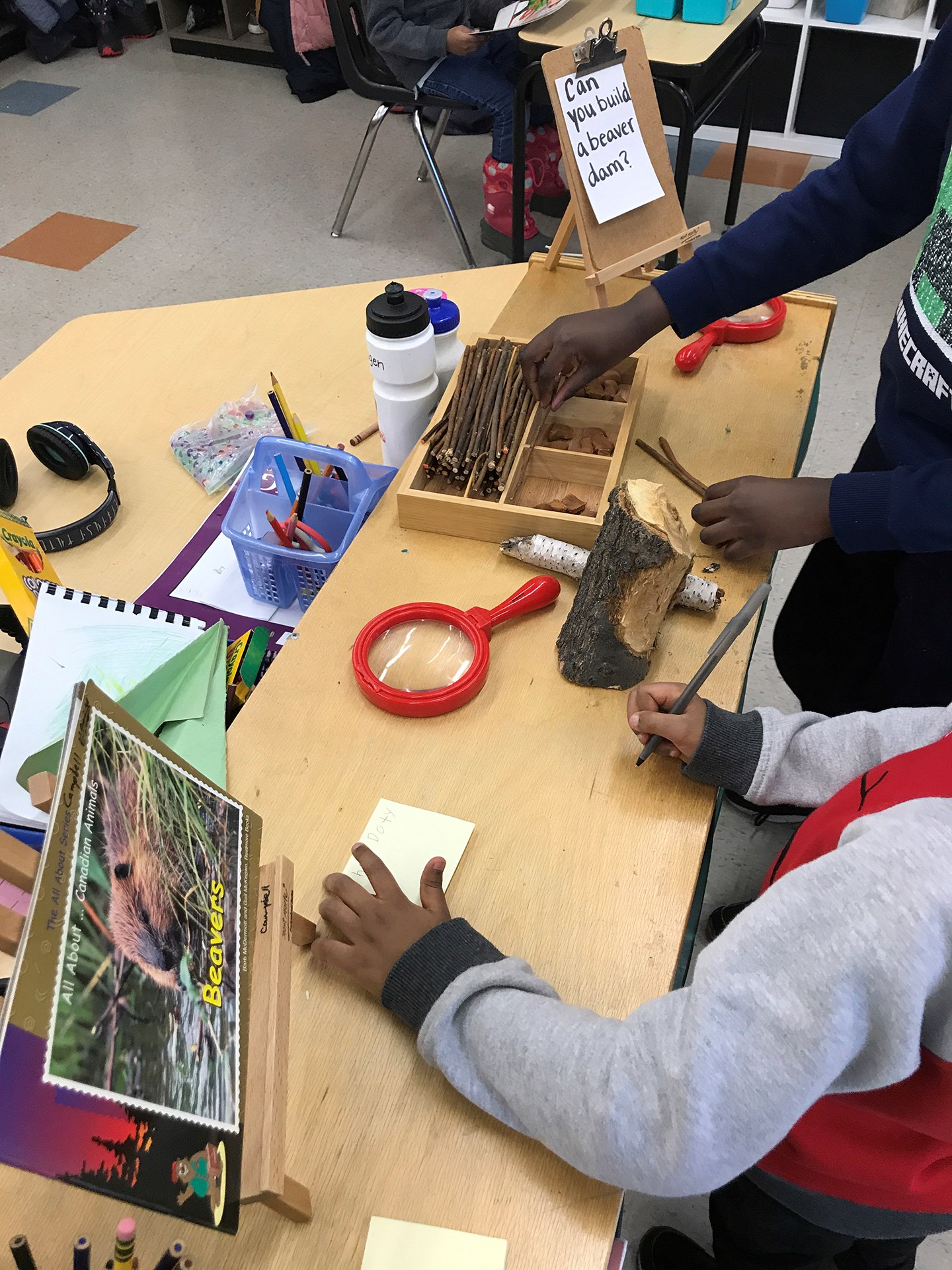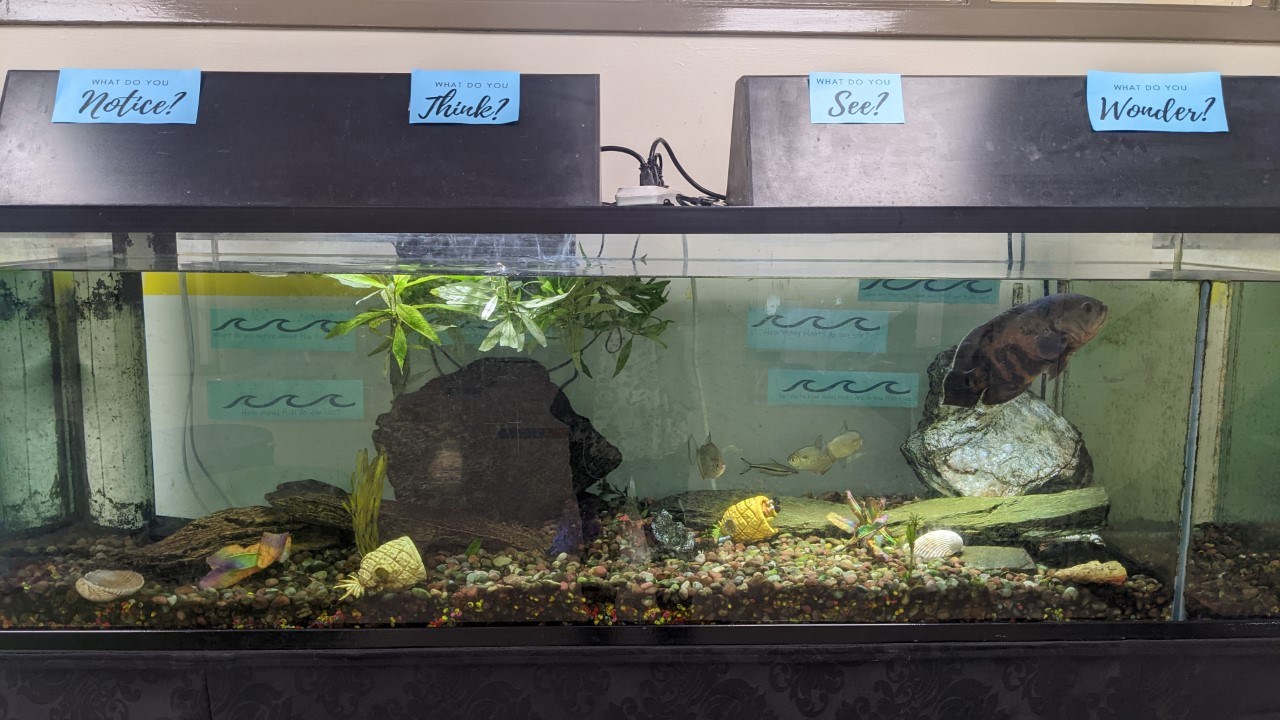Creating joyful readers at Dufferin School
October 24, 2022
Most avid readers have favourite childhood memories of connecting with literature and books in meaningful ways: reading a favourite book under the shade of a tree; acting out characters and scenes from popular books at recess with friends; a favourite teacher reading a cherished storybook aloud in class; or perhaps sneaking a quick read from a captivating novel while sitting at your desk.
Such moments often mark the beginnings of a lifelong love of reading and writing. A team of educators at Dufferin School are exploring ways to create joyful readers and writers through home, school and community partnerships.
In December 2021, the Dufferin initiative was approved as a multiyear project for the Province of Manitoba’s Teacher Idea Fund. The province has since selected the Joyful Readers program as a spotlight project in the Teachers’ Idea Fund Progress report, which was released this month.
“Sometimes as teachers, there’s a lot of pressure to make sure your kids are performing and that there is improvement and success, and we might miss looking at and being really mindful of these important things that are life-long moments…those moments that you remember long after you are in school,” said Dr. Jen Watt, an Assistant Professor at the University of Manitoba and the Developmental Program Evaluator for the Joyful Readers project. “Drawing attention to those moments and giving people time and space to connect to that has been really exciting.”
Provincial funding includes supports for classroom implementation and professional development time for the project team to meet on a monthly basis.
“Our team wanted to examine our values and intentions and reimagine our practises as teachers of literacy after the pandemic,” said Brenna Campbell, a Grade 2 teacher and lead on the Joyful Readers team. “This grant gave us a fantastic opportunity, allowing us time and resources we would not usually have in order to create learning environments that foster joyful reading.”

Rich, meaningful texts
Part of the Joyful Reading team’s goals were to provide high interest, meaningful texts that invoke curiosity and reflect students’ identities, which in turn helps to create reading experiences for students that are centred around their engagement and instructional needs.
“Within our classrooms, there was a need for more rich and engaging texts,” said Dufferin Vice-Principal Maria Manzano. “We wanted more diverse books that reflected students’ life experiences and cultures.”
With many Dufferin students coming from homes where English is not the primary language, the team also wanted to explore ways in which students could consider their families as readers.
“We found a lot of our families didn’t have books at home that had themselves represented, or their languages represented—because we have a lot of newcomers to Canada here at Dufferin,” said Grade 2/3 teacher Natasha Higham. “Part of the project is giving our families resources so they can confidently read to their children and tell them stories. Sometimes it can be intimidating for students to bring home English books that they are not as familiar with or don’t represent their culture as much.”
The team hopes to address this need by bringing in books that reflect the languages spoken at home.
Engaging different learning styles
Part of the Dufferin team’s work has been examining assumptions about literacy and focusing on students’ strengths and learning styles when it comes to engaging with the printed word.
“We’re looking at literacy, reimagining it and seeing it really in strength-based ways,” Dr. Watt said. “We’re moving away from deficit-based ideas around literacy. Sometimes when we focus a lot on certain scores or numbers, then that can become part of the story of a reader. We’ve been looking a lot at diversity and building on strengths, that idea of ‘I am a writer, I am a reader’ and celebrating those connections and excitement and joy.”
In their efforts to get every student to consider themselves as readers and writers, the Dufferin team has sought to engage students with different learning styles and needs.
“You can use physical objects to help students learn by incorporating letter tiles, blocks or more sensory items like kinetic sand,” Ms. Higham said.
When it comes to visual learners, graphic novels can be a great way to connect students to stories. Graphic novels can tackle relatively complex stories such as The Hobbit and make big ideas more accessible to readers of many different learning styles.
“Students who have difficulty reading the novel can still access the story through the graphic novel, and that’s so empowering for them,” said Grade 5/6 teacher Courtney Berthelette.
Engaging environments
Another key goal of the Dufferin team is to provide engaging environments where students can see many different opportunities for inquiry, storytelling, reading and writing.
“The grant allowed us to redesign our environments and provide a learning space for students to develop a sense of agency as readers,” Ms. Campbell said. “We’re piloting this idea of creating literacy spaces throughout the whole school environment…it’s been very successful so far.”
 Dufferin reimagined classroom environments to allow for plenty of spaces for inquiry, reflection, writing and reading.
Dufferin reimagined classroom environments to allow for plenty of spaces for inquiry, reflection, writing and reading.
For example, Dufferin’s main foyer—and its large aquarium, which is popular with students, staff and families—was reimagined as a natural focal point for inquiry. The Joyful Reading team created a workstation that included books and stories connected to the aquarium and marine life, as well as posting inquiry questions and notebooks for students to capture their thoughts and observations.
 Dufferin's foyer aquarium is an excellent example of how any space can become a place for reading, writing and wonder.
Dufferin's foyer aquarium is an excellent example of how any space can become a place for reading, writing and wonder.
“It’s that idea of literacy really coming alive in all sorts of environments,” Dr. Watt said.
“We did a lot of environmental scans, walking around the school and seeing where things were. Even just looking at a fish tank and seeing what opportunities are there…it became this really interactive space. It’s all part of thinking about how we spread that joy, make it accessible and part of the learning environment.”
Teachers are also creating similar environments in their classrooms.
“Teachers are using part of the grant money to develop learning environments within their classroom and the school,” Ms. Manzano said. “For example, the team developed mobile library reading kits for students to access whenever they wanted to read and write. Within these kits were books, reading carpets and a clipboard with reading tools and resources that students can use at any time. Students don’t just have to be in their classroom reading; they can take this literacy kit out for recess, into the hallway or anywhere they want to dive into a book.”
Connecting school to home and community
For the second year of the project, the team plans to hold community literacy nights and other events designed to connect to Dufferin’s families and neighbourhood.
“This year our goal will be connecting with community and focusing on that home and school connection, finding strength-based ways that we can learn from one another, and allowing students to see their family members as readers,” Ms. Campbell said.
The team of educators, which included past Vice Principal Colleen Dawson and Grade 1 teacher Tiffany Waskul for the first year, and current classroom teachers Destiny Elcock, Allison Bennett, Natasha Higham, Courtney Berthelette, and Brenna Campbell, Inclusive Education Resource Teacher Kayla Mackay, Amanda Huang (Early Years Support Teacher), Maria Manzano (Vice Principal) and Dr. Watt, will continue to meet on a monthly basis to reflect, plan and focus on teacher pedagogy.
“This professional development time has been important for me as a teacher, to try to reimagine my practise and to help my students view themselves as more than just a reading level,” Ms. Berthelette said. “For some students, by the time they get to Grade 5, they think they can’t read…they are already jaded. They don’t view themselves as readers or someone who can enjoy reading. For me, my goal for the project was to get all of my students to see themselves as readers.”
Dufferin Principal Garth McAlpine concludes that it has been a tremendous opportunity for Dufferin teachers.
“The grant has impacted teacher learning and student learning in a meaningful and joyful way. I can’t say enough about the way teachers have opened themselves to learning in a collaborative reflective way. The work they are putting in through their joyful readers group is impacting their capacity as teachers and in turn impacting the learning and love of literacy of Dufferin students.”
